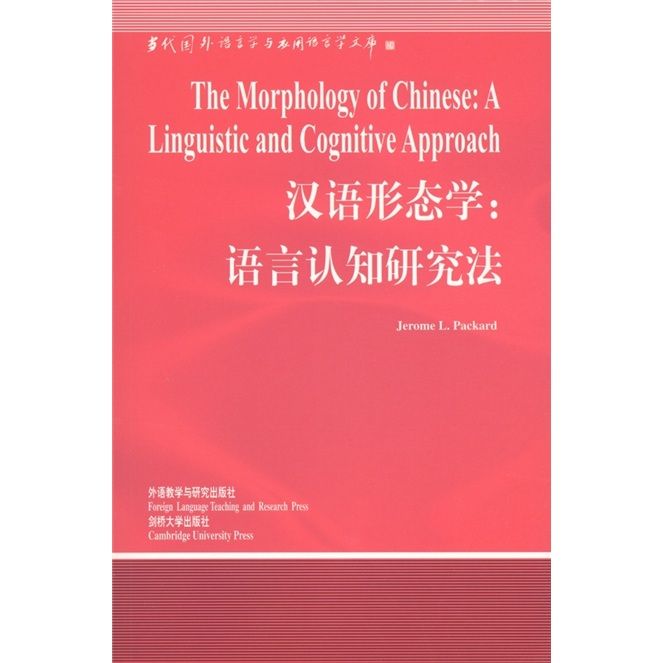《漢語形態學:語言認知研究法》是2001年12月外語教學與研究出版社、劍橋大學出版社聯合出版的圖書,作者是[英]帕卡德(Jerome L.Packard)。
基本介紹
- 書名:漢語形態學:語言認知研究法
- 作者:[英]帕卡德(Jerome L.Packard)
- 出版社:外語教學與研究出版社、劍橋大學出版社
- 出版時間:2001年12月
- 頁數:344 頁
- 定價:31.9 元
- 開本:16 開
- 裝幀:平裝
- ISBN:9787560025193
內容簡介,圖書目錄,
內容簡介
This innovative study dispels tile common belief that Chinese” doesn't have Words” but Instead“has characters”. Jerome Packard’s book provides a comprehensive discussion of the linguistic and cognitive nature of Chinese words.It shows that Chinese,far form being “morphologically impoverished.” has a different morphological system because It select Different“settings” on parameters shared by all languages.The analysis of Chinese word formation therefore enhances our under standing of Word universals.Packard describes the intimate relationship between words and their components.including how the identities of Chinese morphemes ale word-driven.and offers new insights into tile evolution of morphemes based on Chinese data.Models are offered for how Chinese words are stored in the mental lexicon and processed in natural speech.showing that much of what native speakers know about words occurs innately in the from of a hard- wired.specifically linguistic“program”in the brain.
圖書目錄
List of figures
List of tables
List of abbrevlations
Preface by Halliday
王宗炎序
Preface by Chomsky
沈家煊序
導讀
1 Introduction
1.1 Rationale:why investigate Chinese words?
1.2 The scope of this work
2 Defining the word in Chinese
2.1 What is a‘word’?:different views
2.1.1 Orthographic word
2.1.2 Sociological word
2.1.3 Lexical word
2.1.4 Semantic word
2.1.5 Phonological word
2.1.6 Morphological word
2.1.7 Syntactic word J
2.1.8 Psycholinguistic word
2.2 The Chinese concept of' word'
2.2.1 The reality of the 'word' in Chinese
2.3 How we will de fine 'word' in Chinese
3 Chinese word components
3.1 Describing he components
3.1.1 Possible descriptions 2l
3.1.1.1 Relafional description
3.1.1.2 Modification structure description
3.1.1.3 Semantic description
3.1.1.4 Syntactic description
3.I.1.5 Form class description
3.2 Form classes of the components
3.2.1 Form class identities within words
3.3 Criteria for determining form class of Chinese word components
3.4 Morphological analysis of Chinese word components
3.4.1 Distinguishing 'free' and 'bound'
3.4.2 Distinguishing 'content' and 'function'
3.4.3 Morpheme types
3.4.3.1 Two types of affix
3.4.3.2 Word-forming affixes us bound roots 7z
3.4.4 Summary and some test cases
3.4.4.1 Determiners, classifiers and numerals
3.4.4.2 Location morphemes
3.5 The nature of the components
3.5.1 Affixes as word components
3.5.2 Bound roots as word components
3.5.3 Free(‘root')words as word components
4 Gestalt Chinese words
4.1 Word types
4.2 Nouns
4.2.1 Noun types
4.2.1.1 Noun compound words
4.2.1.2 Noun bound root words
4.2.1.3 Noun derived words
4.2.1.4 Noun grammatical words
4.2.2 N1-N2 words:kinds of relations
4.3 Verbs
4.3.1 Verb types
4.3.1.1 Verb compound words
4.3.1.2 Verb bound root words
……
5 X-bar analysis of Chinese works
6 Lexicalization and Chinese words
7 Chinese works and the lexicon
8 Chinese works:conclusions
Refences
Index
文庫索引
Figures

